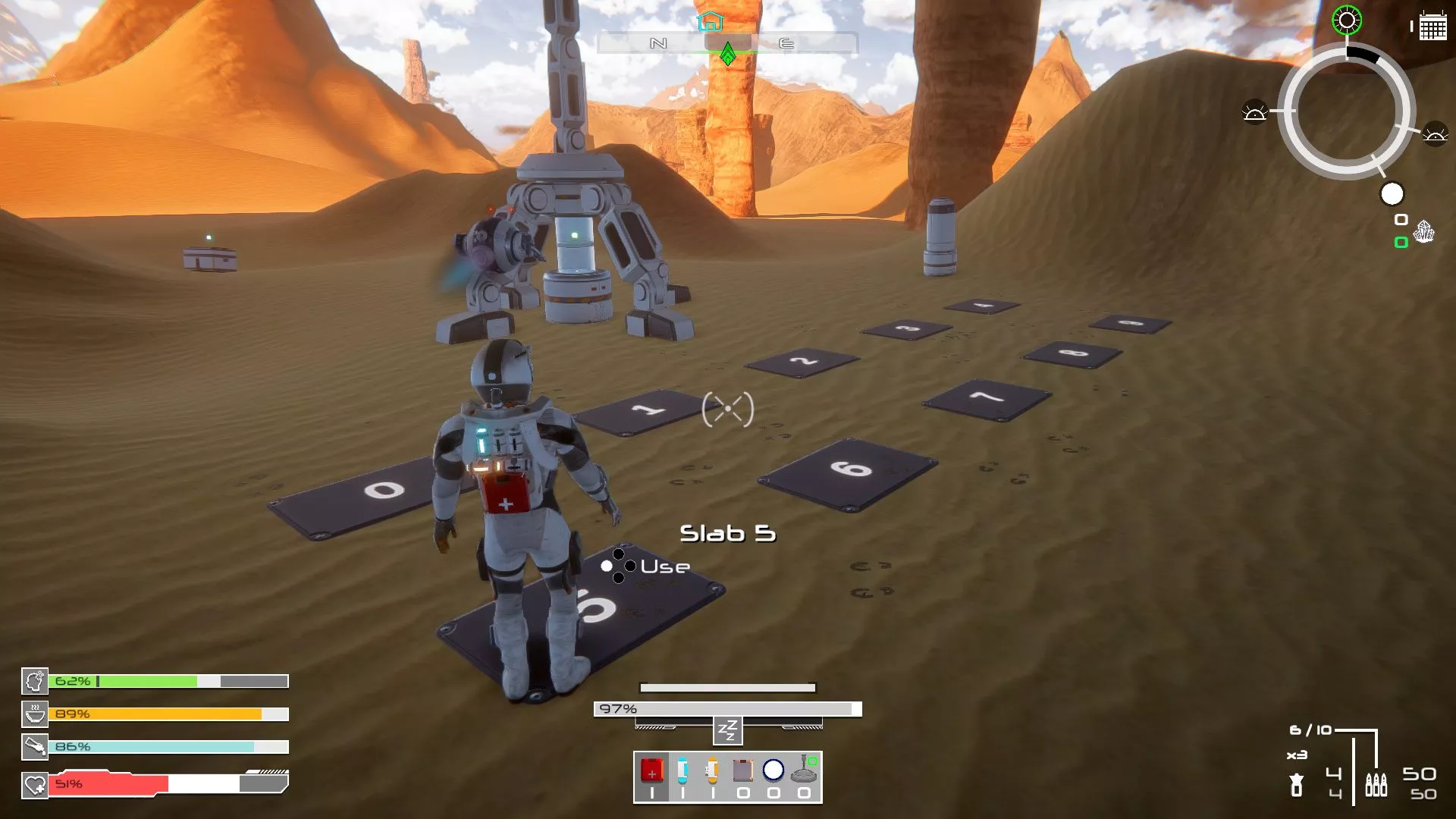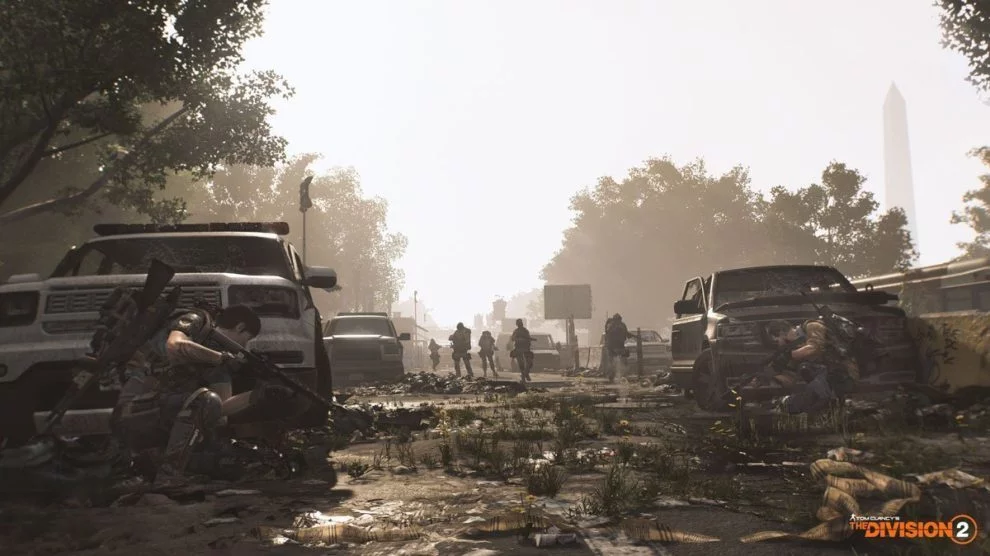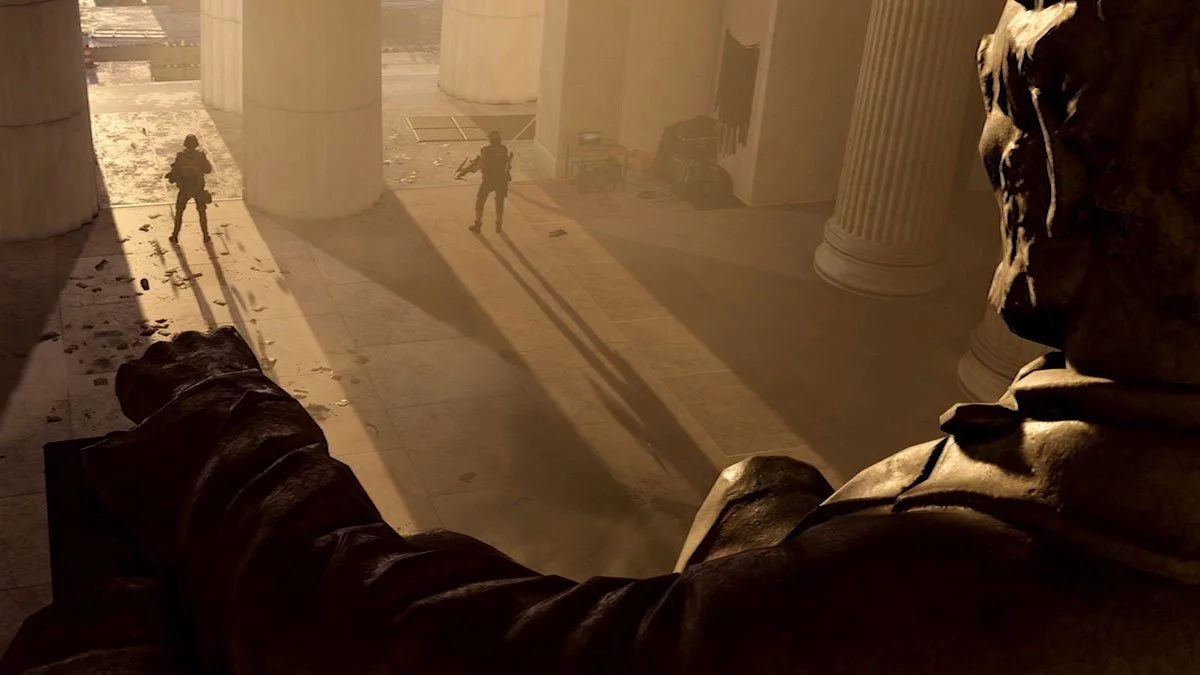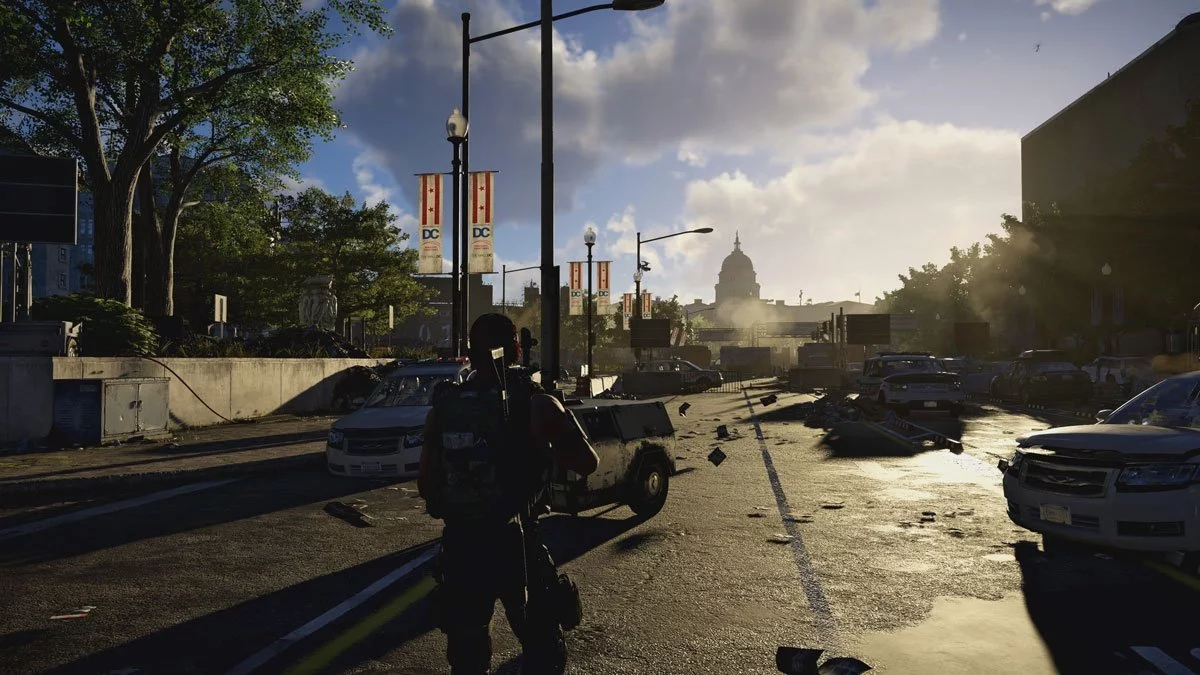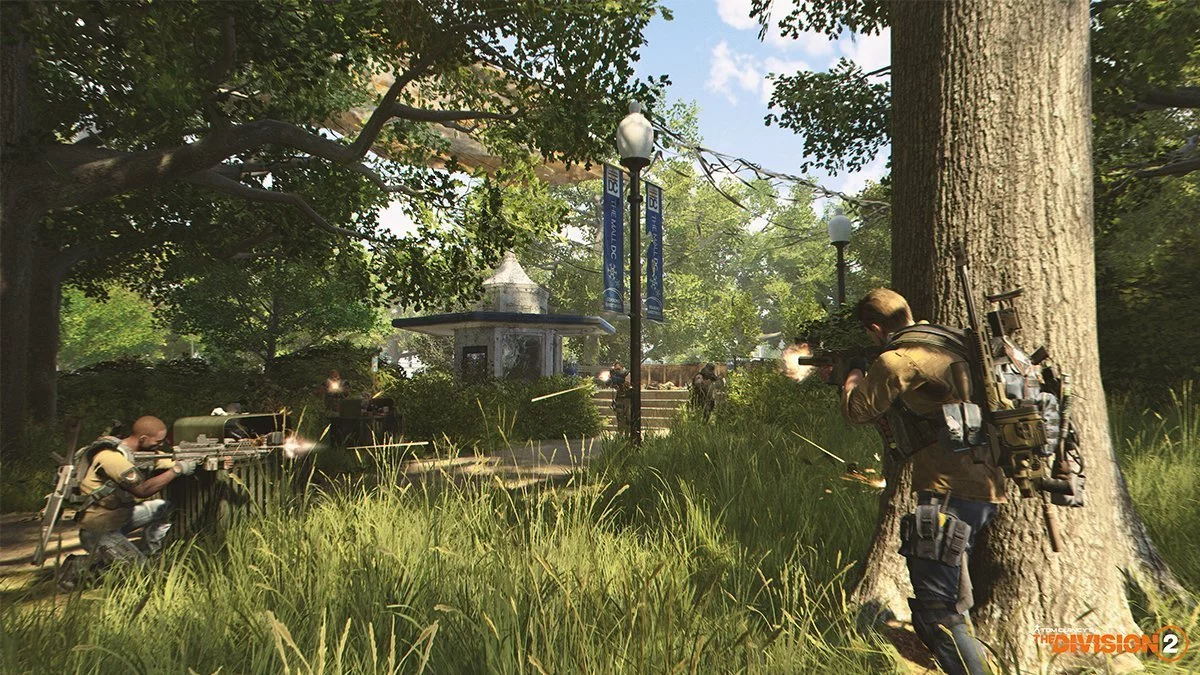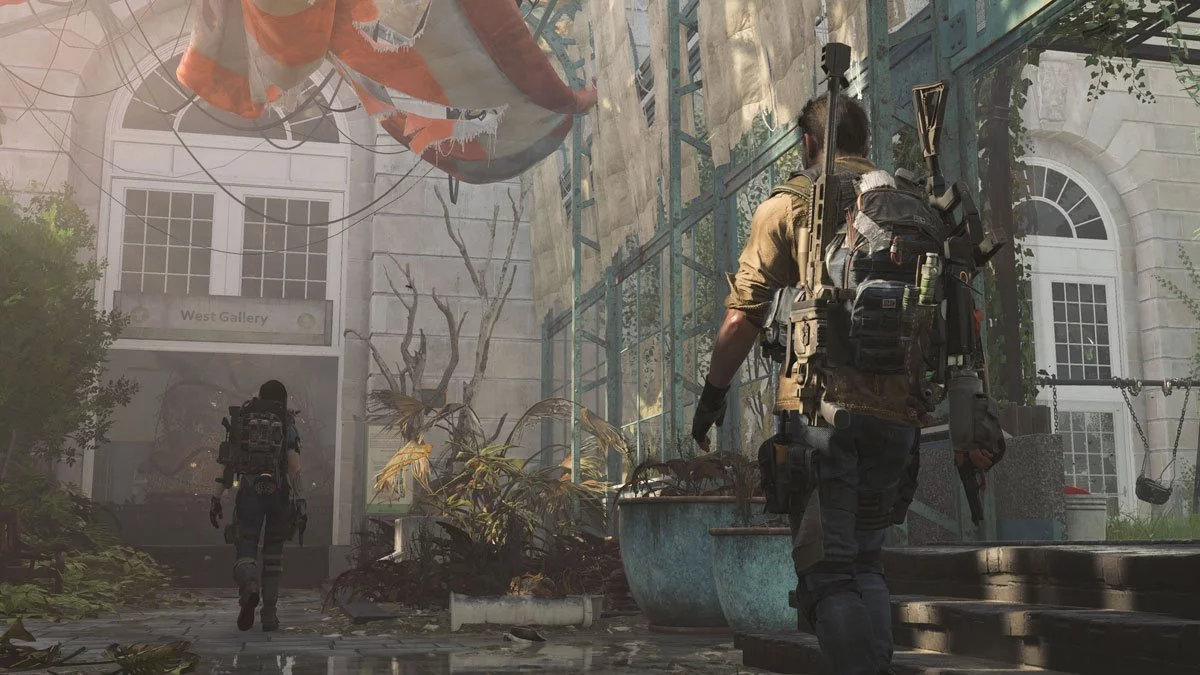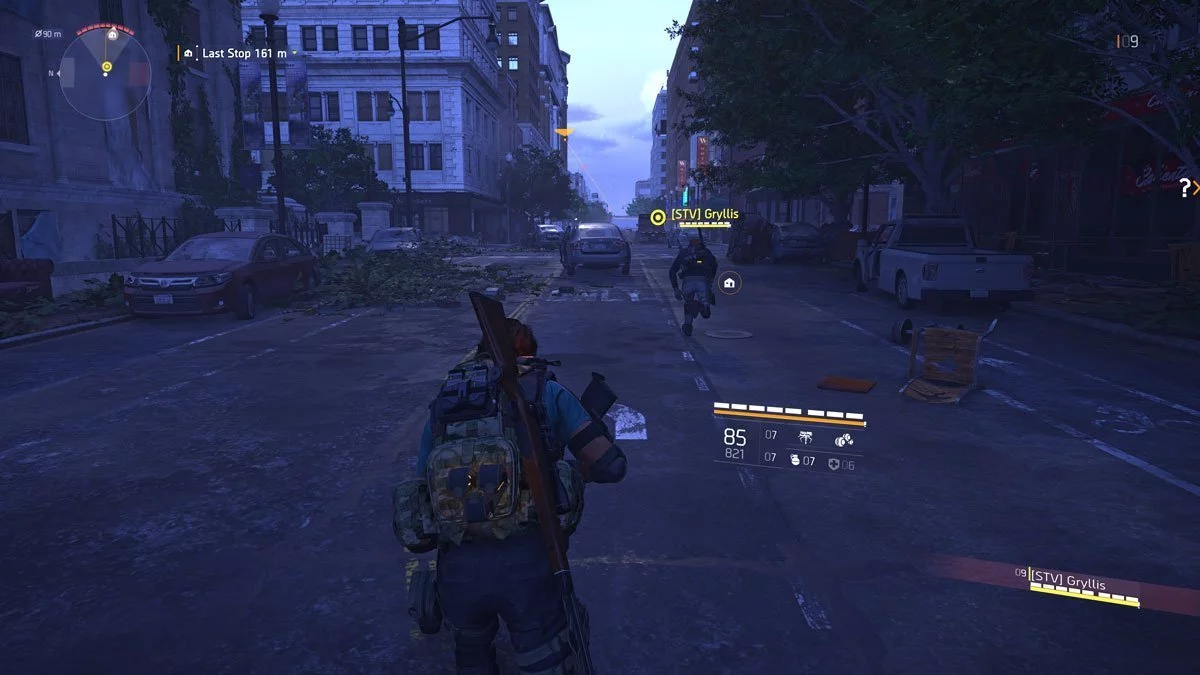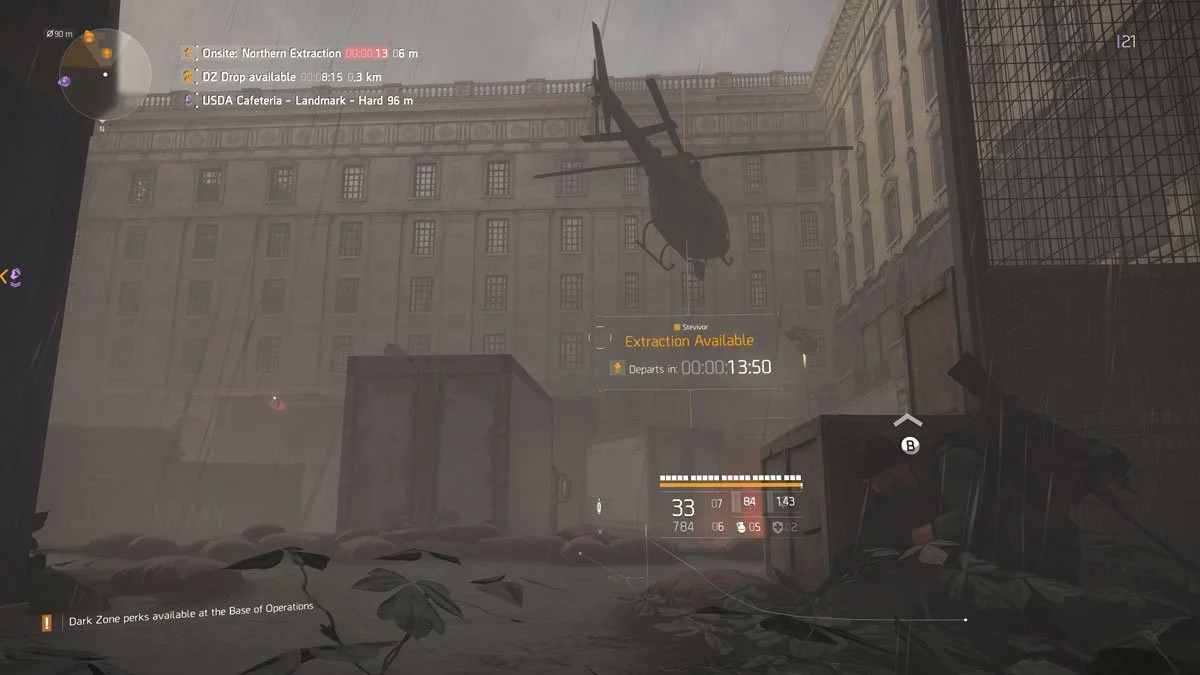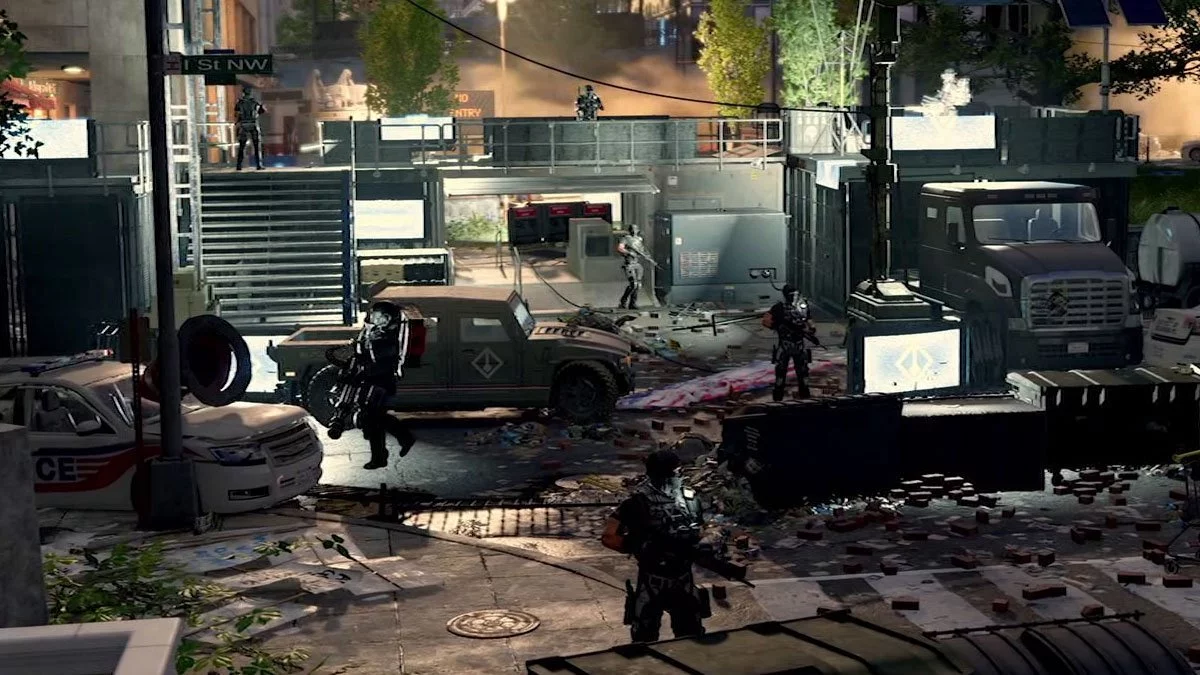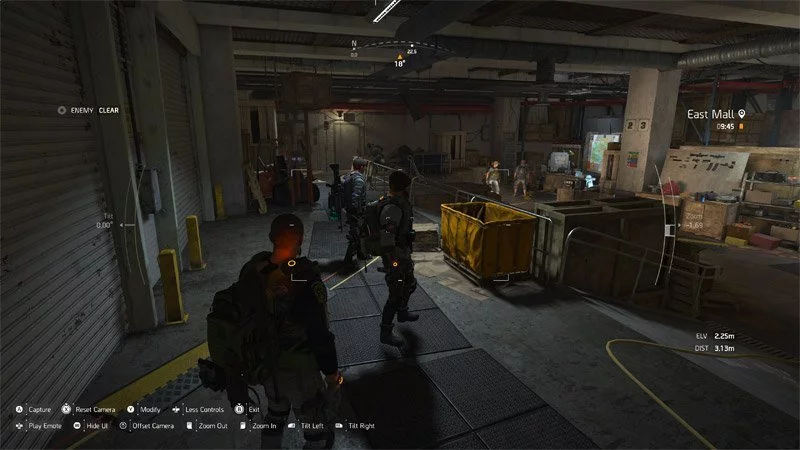Keeping up with our updated review? Why not skip ahead to a new bit?
- Steve’s initial thoughts (14 March)
- Ben’s initial thoughts (14 March)
- Steve’s second update (18 March)
- Ben’s second update (20 March)
- Steve’s final update (26 March)
Steve’s initial thoughts (14 March)
I didn’t think I could love Washington, D.C. any more than I already did after Fallout 3, but I’m seeing the city in an entirely different (yet still post-apocalyptic) light thanks to Tom Clancy’s The Division 2. Massive Entertainment is back with a sequel to its popular looter shooter, fresh off the back of a giant marketing campaign that’s promised an endgame-focused instalment with a year’s worth of content backing up a story that’ll take more than 40 hours to finish. I’m not sure if all those claims ring true as yet, but one thing’s for sure: I adore it.
At the time of writing, I’m about nine or ten hours in and have risen to the ranks of a level 11 agent. I’ve paired with fellow agent Ben Salter for most of my playtime; together, our merry band has smashed (or at least survived by the skin of our teeth) against the Hyenas and the True Sons. We’re only through 27% of main campaign mission content and have only briefly dabbled in world events, Control Points and the PvP-focused Dark Zone. Strongholds looked a little too tough, so we’ve admittedly ignored them entirely at this point.
While my current playtime tally equates to three playthroughs of a Resident Evil 2 scenario, I feel like I’ve barely scratched the surface of what this looter shooter has to offer. This is a very good thing — when I’m not playing The Division 2, I want to be. I can’t remember ever saying that about Anthem, nor do I think I will for months to come. Polished shooting mechanics, challenging enemies and well-designed environments are to thank for that sense of longing.
Despite being plague-swept Washington feels very much alive and vibrant, far removed from the snow-covered, dreary streets of The Division‘s Manhattan. There’s always something to do, from picking up electronic devices and finding echoes in order to fill in survivors’ backstories to world events that have you preventing executions or firing comms stations back up to send hope to those on the streets, fighting to live another day.
Whereas I felt removed from Manhattan and the tragic situation that had unfolded, I already have a connection to the sequel’s world and inhabitants. A survivor’s main goal is to make it to an established settlement, the closest thing to a normal life as we know it. As a Division agent, it’s my job to back up these communities. The Theatre, a location I’m currently supporting, brings a real sense of camaraderie to proceedings; I want to fight to protect it and those who live within it. I want to go out and scavenge for supplies to help the community build its projects. Admittedly, bonuses for helping out — new weapon mods and the like — also provide good incentive.
Things aren’t perfect; it’s an Ubisoft game we’re talking about, so be prepared for a map of Washington simply filled to the brim with mission icons and other UI elements. I’m bouncing around between two Xbox One consoles (so that may be to blame) but each time I log in to play, I’m met by a barrage of long-winded tutorials and prompts that I’ve seen before; even then, there’s so much information being thrown my way through these tooltips that I’ve only digested about 15% of that material. It took me ten hours to figure out how to access photo mode as its prompt is rather hidden amongst everything else.
While combat is top-notch, I’m struggling to find much difference between individual guns: to me, I’ve either got a semi-auto (which I prefer), a shotgun (which I did prefer before higher-level enemies were destroying me at close range) or a carbine (which I now prefer for long range sniping). Despite constant drops, I’ve basically stuck to the same original weapons I obtained. Part of that is because I’ve not encountered any boosts to damage or perks with new guns; this applies to gear too. That sentiment is equally true about gadgets; I’ve been using a turret and seeker mine the entire time and I don’t see the point in swapping those out.
Massive is using a new armour system that it says corrects the feeling of bullet sponge enemies who could take crazy damage. While it makes more sense than in the past — you can see armour breaking more than bullets tunnelling into flesh without effect — the overlaying issue is still there. I’ve found myself using a shotgun at the heads of helmetless enemies far too many times, still lamenting it takes a bunch of bullets to put ’em down. I understand this is an MMORPG, but if I’m encountering the issue now, I’m sure it’ll only get worse as I level up and run into tougher (yellow-barred) enemies.
Ben’s initial thoughts (14 March)
Steve and I are very different players when it comes to looter shooters. I completed Destiny 2 in about 50 hours with a single character, and while it was rewarding to finally get there, it was a strenuous investment; he went through it with two characters… all to get a better gun, to do it again with a third (and, if we’re honest, for an Achievement).
Our contrasting objectives rise to the fore in The Division 2 – I want to push forward and complete main missions, despite being underpowered, and he wants to tackle everything in our path for more loot – but it makes for a balanced duo, and considerably more so than games that occupy a similar space. The bustling streets of Washington DC are brimming with activity, as society begins to recover from the aftermath of the gloomy events of the first game; and those gloomy events made for a dreary, concrete jungle not worth exploring.
Washington, D.C. is colourful in aesthetics and atmosphere, and invites exploration, not only in anticipation of stumbling across slightly better kneepads, but because there’s genuine intrigue in seeing what’s around the next corner. I haven’t actually been to the US capital, but even as an outsider on the other side of the world, it’s not hard to see that the touted 1:1 recreation is faithful in its interpretation.
Amongst all this it does, however, inundate with combat and information. The latter immediately becomes counterproductive, as there are so many tutorials on-screen during the opening hours that I skipped them all and learnt nothing. This is a perfect example of less being more; Massive should have assumed the player was smarter and could have figured out the basics for themselves, thus saving the forced tutorials for unique information it needs to divulge. The former is what we have come to expect from these games – you jump into The Division 2 knowing you are going to be spammed by goon armies set to infinite respawn. But it’s here that our polar opposite styles balance each other out.
If I had my way, we would run past as many random encounters and control points as possible and focus on main missions, even when they are several levels above, to my own detriment. If we played exclusively Steve’s way, we would barely touch the missions. By the time we finally reach the marker, after fighting everything along the way just in-case there is a better backpack, it would be time for bed. The Division 2 wants you to play like Steve, but it’s a deflating endeavour when you spend 20 minutes clearing an area, only to be rewarded with gear that’s worse than what you are already using. Together we’ve managed to find the right balance between looting, shooting and getting on with it.
The jury is still out on what transpires when we inevitably drift apart in DC. I can’t compete with Steve’s looter shootering prowess, and at some point there will be a discrepancy between us. That ultimately put me off both Destiny games, feeling underpowered compared to my comrades who had pushed ahead, and The Division 2’s main mission structure makes me weary that there could be problems if you play with a mate to level 10 and return to find he’s suddenly level 20. There are minor benefits to replaying past missions and helping lower ranked friends forge ahead, but I’m yet to see that play out here, and frankly I don’t understand why anyone would spend serious time doing that.
The combat is satisfying, the world is thriving and the positive reinforcement of looting new gear is already forming strong addictive behaviour, but it’s tangible progress I crave most of all. Some of that comes from levelling up, so there is value in venturing beyond the orange waypoint, but it’s the main mission progress that anchors the inventory screen that drives me most of all. At some point, I’m going to have to go it alone, and while I hear Ubisoft loud and clear when it says The Division 2 is designed as a co-op experience, it also promises solo players haven’t been forgotten. While I’d love to see out the whole thing – the main story, not the time sink endgame – coop, It’s how The Division 2 performs as a single-player campaign that may ultimately decide how far I take this fight.
Steve’s second update (18 March)
One weekend in and I’m now a level 22/25(DZ) agent, single-handedly saving Washington from the True Sons, Hyenas and Outcasts. I’m sinking heaps of hours into the game, ensuring I completely liberate each region before I press on. I’m making a big push to the endgame, though I’m honestly not sure how I’m going to feel about things when I get there.
Ben was away this weekend so I’ve been a solo agent for most of the time since my last update; I’ve occasionally jumped into random requests from other agents (in the hope of reviving them and getting an Achievement, or landing in a group of four for another) and paired up with Friendly Fire Show guest star Tano in one short instance. In the latter, scaling basically wrecked us — Tano was level 7 and I was level 22, and while my game basically bumped him up to level 21 as far as I could see, we were getting one-hit killed by anything and everything. I hope that balancing gets fixed or else that means I won’t be playing with Ben anytime soon.
On the topic of friends, the lowly Stevivor Xbox One clan has a scant two members — yeah, Ben and I — so we’re finding it hard to tackle anything in the way of challenges. In speaking with Luke though, who’s playing on PC, I find I’m not really missing out, per say. He’s been telling me that a number of weekly clan challenges really depend on a group of about 50 players to get anywhere. Chalk The Division 2 up as yet another MMORPG that essentially penalises you for simply wanting to play with friends?
At any rate, I’m becoming very comfortable with combat systems and have even swapped my seeker mine out for the drone and hive bomb, using the latter’s repair, revive and combat applications depending on the situation. I’ve found a shotgun that goes into my handgun slot, so basically use that and whatever assault rifle or LMG and sniper are most powerful. There’s not a yellow bar that can stop me — at least when I’m playing to the appropriate level and on normal difficulty.
As you may have told from my Dark Zone level, I’ve jumped into the dark corners of Washington, D.C. quite a bit. It’s already feeling like a very different experience than what I remember in the original. I’ve only bumped into other players three times after around twenty trips, and at no time in any of those encounters did I feel worried. One team of three did loop around me to check and see if I had contaminated loot (I didn’t) so I think that instance could have played out differently. Otherwise, I think the bigger penalty for going rogue may mean a kinder, gentler DZ. Until we all figure it out, at least. I kind of like it; I’ve been lucky enough to get to extraction zones without and PvP experiences to date, but I’m still scared to death when trying to get stuff out.
While I’m keen to check out the much-hyped endgame content, I’m also filled with dread about it. The itch that The Division 2 is scratching for me is the one every Ubisoft game does: systematically going through a region, completing every main and side mission inside it alongside control points, bounties, SHD caches and world events. I’ve already put in over twenty hours doing so and I’ve got four more regions to go; I think I’m going to be more than a little pissed off then when they’re all taken back from me. Hopefully the narrative will capture that same sentiment and give me reason to play on.
Ben’s second update (20 March)
After a few days of doing offline life, I’m struggling to play catch-up to Steve. As a level 15 compared to his 23, we’re too far apart to counter the armour scaling glitch that makes playing with a power discrepancy impossible; just as I prophesied, The Division 2 has become a mandatory cooperative game that I’m forced to play alone — but lone wolf isn’t the worst way to go about it, as the community has embraced brief alliances.
Since our enforced split, I have been levelling up through side missions alone and delving into the erratic world of matchmaking to complete the longer main missions, which are a chore without any assistance. While I can’t play with my actual friends, The Division 2 is a wonderful single-player/temporary co-op hybrid. I trigger matchmaking while commencing a main mission, and within a few seconds have two or three likeminded agents to share the load.
The infrastructure is there to facilitate random agents teaming up for mutual benefit, but it’s ultimately the community who has made it an effective, enjoyable experience. My unfamiliar teammates have always been unified as we strive towards a common goal. Players have been quick to revive and astute to support against tougher opponents — and then disband as soon as the mission is over. There has been the odd case of an imbecile stuck across the other side of the map who doesn’t seem to comprehend fast travel, but for the most part, teaming up with strangers is working well.
Outside of main missions as a solo player without support, I’m finding myself considerably more defensive, without the safety net of a revival, and more reliant on abilities. I’m primarily rocking a drone and turret, both of which inflict damage and take some of the fire. They effectively become my teammates, so mustering all my cunning, I wait for their cool downs to expire before activating an objective, knowing more goons are bound to appear. The Division 2 is entirely possible alone, it just requires a little more patience and help from your mechanical friends.
While the scenarios are repetitive and predictable, combat encounters are anything but. Fantastic enemy AI makes them hard to anticipate, leaving each firefight feeling different to the last, even if missions follow a similar blueprint. I’m sure players who invest considerably more time will determine specific triggers, but from where I’m sitting, it feels like AI opponents are based on the behaviour of real players. They don’t act as robots; sometimes they’re erratic and too aggressive, while at other times they hang back and provide support to revive comrades or repair equipment. You know a sniper is going to take potshots from afar and a tank is going to charge forward, but in terms of their tactical variety, this is some of the best AI behaviour I have seen in a cover-based shooter, especially one with so many variables.
The best way to play The Division 2 would be to start on the same day as three mates and pledge to play three nights a week — no more, no less — to reach the endgame together. That’s not happening, so at least for now, The Division 2 isn’t a game you can comfortably play with friends all the way through. But the community has come together to bridge the gaps and deliver a co-op shooter where strangers cooperate as required to compensate for the isolating levelling system, and in many ways, that makes it a far more accessible looter shooter. If you have ever felt disconnected from Destiny, Anthem or even Call of Duty Zombies because you don’t have a reliable squad, The Division 2’s community of temporary teammates will welcome you with open arms.
Steve’s final update (26 March)
I’ve been inside The Division 2‘s endgame for some days now, and I’m left a bit lacking. As I suspected, the big payoff of losing all of my mission and region progress wasn’t enough of a spectacle (though I did end up with most of my Control Points intact) and I’m struggling to find the desire to replay multiple main and side missions against the Black Tusk. For the most part, the missions are repetitive and lacking enough variation to justify a replay. After completing a handful, I remembered there’s an Achievement for completing every mission on hard though, so it looks like I’ll be revisiting each again shortly.
I’ve just gained the appropriate gear score to tackle the Black Tusk Strongholds, though I’m not that keen to do so just yet. I’ve got a bit of Division burnout at the moment, if I’m being honest, but I’m sure that won’t be the case in a week or two. Simply put, I’ve enjoyed the 30 or so hours I’ve already put into The Division 2, but I’m also happy for a break. I’d put the game itself as an 8 on our scale right now — with a compelling storyline and great opportunities for loot, it’s hard not to recommend. I only wish that endgame content came in the form of unique missions, not reskinned ones.
Let’s see what Ben thinks and then close this review up.
The Division 2 is available now on Windows PC, Xbox One and PS4.
 |
|
The good
|
The bad
|
Tom Clancy’s The Division 2 is being reviewed using promotional codes on Windows PC and Xbox One X, as provided by the publisher. Click here to learn more about Stevivor’s scoring scale.
This article may contain affiliate links, meaning we could earn a small commission if you click-through and make a purchase. Stevivor is an independent outlet and our journalism is in no way influenced by any advertiser or commercial initiative.





